Servicio de moldeo por inyección transparente y transparente
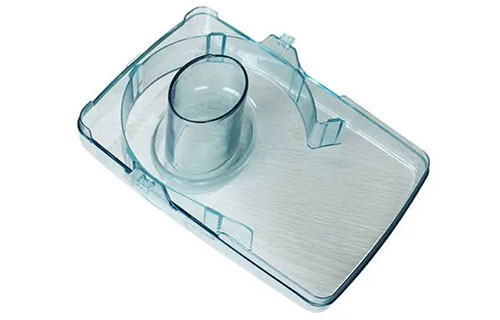
Custom Transparent Clear Injection Molding Parts
Injection molding technology is simply ubiquitous, permeating every aspect of our lives. Think about it, the toys in children's hands, the key components in cars, as well as the precision components in medical equipment and aerospace fields, which one is not its masterpiece? But when it comes to the most difficult task here, it is definitely to create parts that are both transparent and clear, and can maintain transparency for a long time without whitening. This is simply a technical challenge! To be honest, achieving transparent injection molding is not as simple as just talking. Starting from the selection of materials, one must be meticulous in their selection; Mold design also needs to be meticulous and detailed; During the injection molding process, the control of temperature and pressure must be meticulous. Every step needs to be carefully controlled to ensure that the final product quality is excellent. Okay, don't worry, I'll slowly reveal these technical points to you. Let's unveil the mysterious veil of transparent injection molding together!
What is Transparent Clear Injection Molding?
Transparent clear injection molding is a process used to create clear, transparent plastic parts with high optical clarity. It involves injecting molten plastic into a mold cavity, allowing it to cool and solidify into the desired shape. The process requires high precision and control to prevent any impurities or air bubbles from forming in the plastic, which can cause the part to become cloudy or hazy.
Transparent clear injection molding is typically done using polymers such as polycarbonate, acrylic, and PET. These materials are known for their transparency and ability to maintain clarity over time, even when exposed to harsh environmental conditions.
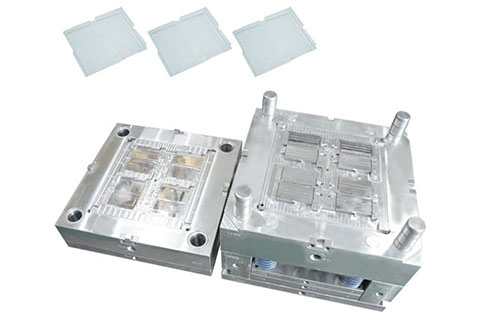
Design, Transparent Clear Injection Mold making, production and assembly
¿Qué podemos hacer exactamente?
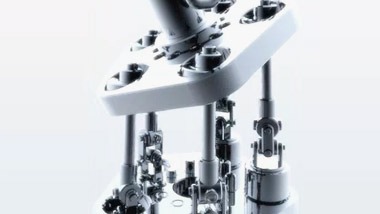
Diseño de moldes
>Proporcionar muestras, dibujos y requisitos, y proporcionar optimización de dibujos y apoyo al diseño y eficiencia.
>Buena optimización de la estructura de moldes de inyección y prestación de servicios de desarrollo de moldes de alta eficacia
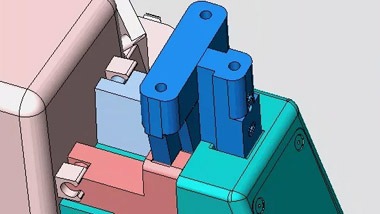
Fabricación de moldes
>De acuerdo con los requisitos de la estructura del producto y el rendimiento del producto, diseñar razonablemente la estructura del molde y cooperar con el software 3D para el análisis del flujo del molde.
>Utilice la impresión de placas láser 3D para que sus muestras cumplan los requisitos de una sola vez
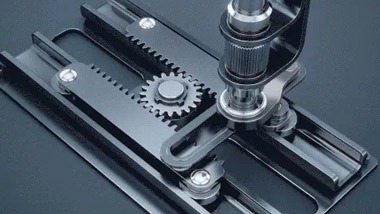
Producción de productos
>Producción de lotes tras la determinación de muestras
>With a complete production management team and equipment, it can deliver on time and quickly as soon as one week
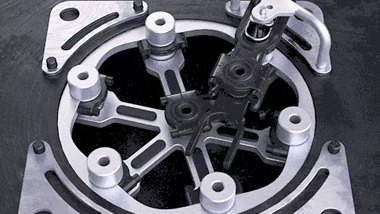
Montaje del producto
>Incoming inspection - material preparation - assembly Online - assembly - finished product inspection - shipment
The Benefits of Transparent Clear Injection Molding
Transparent clear injection molding offers several benefits, including:
High optical clarity: The process produces parts with excellent optical clarity, making them ideal for applications where transparency is critical, such as lenses, displays, and medical devices.
Design flexibility: Injection molding allows for intricate part designs and shapes, making it possible to create parts with unique features that cannot be achieved with other manufacturing processes.
Cost-effective: Injection molding is a cost-effective manufacturing process, especially for large volume production runs, reducing the cost per part.
Consistent quality: Injection molding provides consistent part quality, with minimal variation between parts, ensuring uniformity in product performance.
Applications of Transparent Clear Injection Molding
Transparent clear injection molding is used in various applications, including:
Automotive: Clear plastic parts such as lenses, mirrors, and instrument panels are commonly manufactured using injection molding.
Medical: Injection molding is used to manufacture clear plastic medical devices such as syringes, IV components, and surgical instruments.
Electronics: Transparent plastic parts such as displays, touchscreens, and light guides are commonly manufactured using injection molding.
Consumer products: Injection molding is used to manufacture clear plastic parts such as bottles, containers, and packaging.
Factors Affecting Transparent Clear Injection Molding
Several factors can affect the quality of transparent clear injection molding, including:
Material selection: The choice of material affects the clarity and transparency of the final product. Polymers such as polycarbonate, acrylic, and PET are commonly used for transparent clear injection molding.
Mold design: The mold design must be optimized for transparent clear injection molding, with particular attention to minimizing any imperfections that can cause the part to become cloudy or hazy.
Processing parameters: The injection molding process parameters, such as temperature, pressure, and cooling rate, must be carefully controlled to prevent defects such as warping, sink marks, or flow lines.
Part design: The design of the part affects the ease of molding and the quality of the final product. The design should minimize any areas that can trap air or impurities and cause cloudiness.
Custom Transparent Clear Injection Molding Service
Transparent injection molding is a craft specifically designed to create plastic parts that are crystal clear and have exceptional clarity. Its benefits are countless, such as flexible and versatile design, relatively low cost, and most importantly, stable quality that makes people feel at ease. It can be seen in the automotive industry, medical field, electronic products, and everyday consumer goods.
However, in order to produce high-quality transparent parts, one must put in a lot of effort in material selection, mold design, processing parameters, and part design. Every detail cannot be taken lightly. Manufacturers need to collaborate with experienced and reputable injection molding companies in order to have the strength to use professional equipment, technology, and experience to achieve the ultimate in transparent parts and meet various needs.
So, transparent injection molding is too important for the manufacturing industry. As long as we put our heart into every aspect, we can create durable and consistent transparent parts. This craft is a treasure in various industries, and with the increasing demand for transparent plastic parts in the market, its application will also become more and more extensive.
FAQ About Transparent Clear Injection Molding
Transparent clear injection molding is a process that produces plastic parts with high optical clarity and minimal defects. It is used for applications that require transparency, such as lenses, medical devices, lighting fixtures, and consumer products. The process involves injecting molten plastic into a mold cavity that has been polished to a mirror finish. The plastic then cools and solidifies, taking the shape of the mold. The key factors that affect the quality of transparent clear injection molding are the material selection, the mold design, the injection parameters, and the post-processing methods. The material should have high transparency, low viscosity, low shrinkage, and good thermal stability. The mold should have smooth surfaces, precise dimensions, and adequate cooling channels. The injection parameters should be optimized to avoid air bubbles, flow marks, warping, and other defects. The post-processing methods should include annealing, coating, or polishing to enhance the optical properties and durability of the plastic parts.
Transparent clear injection molding is a process that uses transparent plastic materials to create products with high clarity and optical properties. This process can offer several benefits for your products, such as:
- Enhancing the aesthetic appeal and design flexibility of your products. Transparent clear injection molding can produce products with complex shapes, intricate details, and smooth surfaces that showcase the internal components or features of your products. You can also choose from a variety of colors, finishes, and effects to customize your products according to your preferences and needs.
- Improving the functionality and performance of your products. Transparent clear injection molding can produce products with high strength, durability, and resistance to impact, abrasion, chemicals, and UV rays. These properties can help your products withstand harsh environments and conditions, as well as extend their lifespan and reduce maintenance costs. Additionally, transparent clear injection molding can produce products with high light transmission, refractive index, and optical clarity, which can enhance the visibility and quality of your products.
- Reducing the production time and cost of your products. Transparent clear injection molding can produce products with high accuracy and consistency, which can reduce the need for post-processing or secondary operations. This can save you time and money in the production process, as well as improve the quality and reliability of your products. Furthermore, transparent clear injection molding can use less material and energy than other processes, which can lower your environmental impact and operational expenses.
As you can see, transparent clear injection molding can offer many benefits for your products. If you are interested in using this process for your products, please contact us today to get a quote and learn more about our services.
Transparent clear injection molding is a process that involves injecting molten plastic into a mold to create products that are clear or transparent. The process requires careful selection of materials, equipment, and processing parameters to ensure the clarity and quality of the final products. Some of the challenges and limitations of transparent clear injection molding are:
- Moisture absorption: Some transparent plastics, such as acrylic and polycarbonate, can absorb moisture from the air, which can cause cloudiness, bubbles, or cracks in the molded parts. Therefore, these materials need to be dried before injection molding to remove any moisture content.
- Mold design: The mold design for transparent clear injection molding needs to consider factors such as gate location, venting, cooling, and surface finish to avoid defects such as flow marks, weld lines, sink marks, or scratches that can affect the clarity of the molded parts. The mold also needs to be cleaned and maintained regularly to prevent any contamination or degradation of the mold surface.
- Processing conditions: The processing conditions for transparent clear injection molding need to be optimized to achieve a balance between melt temperature, injection speed, pressure, and cooling time. Too high or too low temperature, speed, or pressure can cause thermal degradation, stress, or distortion of the molded parts. Too long or too short cooling time can cause shrinkage, warping, or crystallization of the molded parts.
There are several materials and additives that can be used for transparent clear injection molding, depending on the desired properties and applications of the final product. Some of the most common ones are:
- **Acrylic (PMMA)**: This material is non-toxic, scratch-proof, and UV-resistant, making it suitable for outdoor equipment and lenses. It can be molded into clear and colored plastic products with high clarity. However, it is brittle and inflexible, and it needs to be dried after absorbing moisture before molding .
- **High-density Polyethylene (HDPE)**: This material is UV-resistant, cheap, and easy to mold. It is often used for containers, bottles, and pipes. It has good impact resistance but low tensile strength. It is formed by applying high heat and pressure to petroleum .
- **Polycarbonate (PC)**: This material is transparent, UV-resistant, and resistant to extreme temperatures. It is ideal for products that require safety and durability, such as windows, helmets, and goggles. It has high impact resistance and dimensional stability. Like acrylic, it also needs to be dried before molding .
- **Polyetherimide (PEI)**: This material is impervious to intense heat, repeated pressure, and acids. It is commonly used for medical, automotive, and aerospace products. It has high thermal stability, mechanical strength, and chemical resistance .
- **K-Resin**: This material is a styrene-butadiene copolymer that offers high clarity, gloss, and impact strength. It is easy to process and has good flow properties. It is suitable for packaging, medical devices, toys, and displays .
- **NAS**: This material is a methyl methacrylate-styrene copolymer that combines the transparency of acrylic with the toughness of styrene. It has good chemical resistance, heat resistance, and weatherability. It can be used for cosmetics, lighting fixtures, household appliances, and optical lenses .
- **Polysulfone (PSU)**: This material is a high-performance thermoplastic that has excellent transparency, heat resistance, and hydrolytic stability. It can withstand steam sterilization and autoclaving. It is often used for medical instruments, membranes, filters, and electrical components .
- **Polypropylene (PP)**: This material is a semi-crystalline thermoplastic that has good clarity, stiffness, and toughness. It has low moisture absorption and good chemical resistance. It can be used for food packaging, medical products, automotive parts, and textiles .
- **Optical Silicone Rubber (OLSR)**: This material is a liquid silicone rubber that can be injection molded into clear parts with high optical quality. It has excellent thermal stability, light transmission, and flexibility. It can be used for optical lenses, light guides, LED encapsulation, and solar concentrators .
Some additives that can enhance the transparency of clear injection molding are:
- **Clarity enhancers**: These are additives that reduce the haze or cloudiness of the plastic by modifying its refractive index or crystallinity. They can improve the light transmission and gloss of the product .
- **UV stabilizers**: These are additives that protect the plastic from degradation caused by exposure to ultraviolet radiation. They can prevent discoloration, cracking, or loss of mechanical properties of the product .
- **Antistatic agents**: These are additives that reduce the static charge buildup on the plastic surface by increasing its conductivity or dissipating the charge. They can prevent dust accumulation, electrostatic discharge, or spark generation on the product .
One of the challenges of transparent clear injection molding is to ensure the quality and consistency of the products, especially in terms of clarity, strength, and dimensional accuracy. To achieve this, there are several factors that need to be considered and controlled during the molding process, such as:
- Material selection: Choosing the right resin for the application is crucial, as different resins have different properties and behaviors. Some of the common resins used for transparent clear injection molding are polycarbonate (PC), acrylic (PMMA), polyethylene terephthalate (PET), and polystyrene (PS). The resin should have high transparency, low viscosity, good flowability, and high heat resistance.
- Mold design: The mold should be designed to minimize stress, warpage, and shrinkage of the product. The mold cavity should have a smooth surface finish, adequate venting, and uniform cooling. The mold temperature should be optimized to avoid thermal degradation, crystallization, or bubbles in the product.
- Process parameters: The process parameters, such as injection speed, pressure, time, and temperature, should be adjusted to ensure a complete and uniform filling of the mold cavity, without causing excessive shear stress, jetting, or flash. The process parameters should also prevent the formation of defects such as sink marks, weld lines, or flow marks in the product.
- Post-processing: The post-processing steps, such as annealing, coating, or polishing, can improve the quality and appearance of the product. Annealing can reduce internal stress and improve dimensional stability. Coating can enhance the scratch resistance, UV protection, or anti-fogging properties of the product. Polishing can remove any surface imperfections or blemishes from the product.
Transparent clear injection molding products are widely used in various industries, such as medical devices, optical lenses, consumer electronics, and more. However, designing and molding these products can pose some challenges, such as minimizing defects, ensuring dimensional accuracy, and achieving the desired optical properties. In this article, we will discuss some tips and best practices for optimizing the design and mold of transparent clear injection molding products.
The first step is to choose the right material for your product. There are many types of transparent plastics available, such as polycarbonate (PC), acrylic (PMMA), polyethylene terephthalate (PET), and more. Each material has its own advantages and disadvantages, such as strength, clarity, heat resistance, chemical resistance, and cost. You should consider the functional and aesthetic requirements of your product, as well as the molding conditions and post-processing methods, when selecting the material.
The second step is to design your product with moldability in mind. This means avoiding features that can cause molding defects, such as sharp corners, thin walls, thick sections, undercuts, and complex geometries. You should also consider the shrinkage rate of the material and apply appropriate draft angles to facilitate ejection. Additionally, you should design your product with uniform wall thickness to avoid warping, sink marks, and stress concentration.
The third step is to optimize your mold design and fabrication. You should use high-quality steel with good polishability and corrosion resistance for your mold cavity and core. You should also ensure that your mold has adequate cooling channels to maintain a consistent temperature throughout the molding cycle. Furthermore, you should use a suitable gate type and location to minimize gate marks, weld lines, and flow marks on your product.
The fourth step is to fine-tune your molding process parameters. You should use a high injection speed and pressure to fill the mold cavity quickly and completely. You should also use a high mold temperature and a low melt temperature to reduce internal stress and improve surface quality. Moreover, you should minimize the cycle time and avoid excessive holding time and packing pressure to prevent degradation and discoloration of the material.
By following these steps, you can optimize the design and mold of transparent clear injection molding products and achieve high-quality results. However, you should also keep in mind that each product is unique and may require some trial-and-error adjustments to find the optimal solution. Therefore, you should always test your prototypes and samples before mass production.
Transparent clear injection molding is a process that produces plastic parts with high optical clarity and minimal defects. However, it also poses some challenges in terms of cycle time and cost, which can affect the profitability and quality of the products. Here are some tips on how to reduce the cycle time and cost of transparent clear injection molding:
- Choose the right material. Different materials have different properties, such as melt temperature, viscosity, shrinkage, and mold release. Choosing a material that suits the design and function of the part can help reduce the cycle time and cost by minimizing the risk of warping, cracking, or sticking. Some common materials for transparent clear injection molding are polycarbonate (PC), acrylic (PMMA), polyethylene terephthalate glycol (PETG), and cyclic olefin copolymer (COC).
- Optimize the mold design. The mold design affects the flow, cooling, and ejection of the plastic part. A well-designed mold can reduce the cycle time and cost by ensuring a uniform temperature distribution, a smooth flow path, and a quick ejection. Some factors to consider in the mold design are the gate location, size, and shape, the runner system, the venting system, and the cooling system.
- Control the process parameters. The process parameters, such as injection pressure, speed, time, temperature, and holding pressure, influence the quality and efficiency of the transparent clear injection molding. Controlling these parameters can reduce the cycle time and cost by avoiding defects such as bubbles, sink marks, flow lines, or jetting. Some methods to control the process parameters are using a scientific molding approach, using a closed-loop control system, and using a process monitoring system.
- Implement quality control measures. Quality control measures can help reduce the cycle time and cost by detecting and preventing defects before they affect the final product. Some quality control measures are using a visual inspection system, using a dimensional measurement system, using a defect analysis system, and using a statistical process control system.
Transparent clear injection molding products are widely used in various industries, such as medical devices, optical lenses, consumer electronics, and packaging. However, these products often have high quality requirements and strict specifications, which pose challenges for the injection molding process. Defects and failures in transparent clear injection molding products can affect their appearance, functionality, and durability, leading to customer dissatisfaction and increased costs. Therefore, it is important to understand the causes of these defects and failures, and how to prevent them.
Some of the common defects and failures in transparent clear injection molding products are:
- Bubbles: These are small pockets of air or gas trapped inside the product, which can reduce its transparency and strength. Bubbles can be caused by insufficient venting, excessive injection speed, low melt temperature, high mold temperature, or moisture in the resin.
- Flow marks: These are streaks or lines on the surface of the product, which can impair its aesthetics and optical properties. Flow marks can be caused by low melt temperature, high injection speed, high mold temperature, or poor resin flowability.
- Burn marks: These are dark spots or discolorations on the product, which can indicate thermal degradation of the resin. Burn marks can be caused by excessive injection speed, high melt temperature, insufficient cooling, or improper venting.
- Stress cracking: These are cracks or fractures on the product, which can compromise its integrity and performance. Stress cracking can be caused by excessive internal stress, external stress, environmental factors, or incompatible materials.
To prevent these defects and failures in transparent clear injection molding products, some of the best practices are:
- Choose a suitable resin material that has good transparency, flowability, thermal stability, and compatibility with other components.
- Optimize the injection molding parameters, such as injection speed, pressure, time, temperature, and cooling rate, to ensure a uniform and complete filling of the mold cavity.
- Design and maintain the mold properly, with adequate venting, cooling, and ejection systems, to avoid air entrapment, overheating, or deformation of the product.
- Control the moisture content of the resin before injection molding, to avoid bubbles or degradation.
- Perform quality inspection and testing of the product after injection molding, to detect and eliminate any defects or failures.
By following these guidelines, you can prevent defects and failures in transparent clear injection molding products, and ensure their high quality and reliability.
Testing and measuring the properties and performance of transparent clear injection molding products is a crucial step in ensuring the quality and reliability of these products. There are several methods and instruments that can be used to evaluate the optical, mechanical, thermal, and chemical characteristics of transparent clear injection molding products, such as:
- Spectrophotometers: These devices measure the transmittance, reflectance, and absorbance of light by a material at different wavelengths. They can be used to determine the color, clarity, haze, gloss, and UV resistance of transparent clear injection molding products.
- Refractometers: These devices measure the refractive index of a material, which is the ratio of the speed of light in a vacuum to the speed of light in the material. They can be used to determine the optical density, dispersion, and birefringence of transparent clear injection molding products.
- Tensile testers: These devices measure the force required to stretch a material until it breaks. They can be used to determine the tensile strength, elongation, modulus, and yield point of transparent clear injection molding products.
- Impact testers: These devices measure the energy absorbed by a material when it is subjected to a sudden impact. They can be used to determine the impact strength, toughness, and fracture resistance of transparent clear injection molding products.
- Thermal analyzers: These devices measure the changes in the physical or chemical properties of a material as a function of temperature or time. They can be used to determine the melting point, glass transition temperature, crystallization temperature, thermal expansion coefficient, and thermal stability of transparent clear injection molding products.
- Chemical analyzers: These devices measure the composition, purity, or contamination of a material by using various techniques such as chromatography, spectroscopy, or titration. They can be used to determine the molecular weight, viscosity, moisture content, additives, solvents, and impurities of transparent clear injection molding products.
Transparent clear injection molding products are widely used in various applications and industries that require high optical clarity, durability, and resistance to chemicals and heat. Some of the common examples of transparent clear injection molding products are:
- Lenses for cameras, microscopes, telescopes, binoculars, eyeglasses, and other optical devices.
- Light guides, light pipes, light diffusers, and light covers for LED lighting, backlighting, and display systems.
- Windows, screens, and panels for electronic devices, medical equipment, automotive components, and aerospace applications.
- Containers, bottles, jars, and tubes for food, beverage, cosmetic, pharmaceutical, and chemical products.
- Housings, cases, shells, and covers for consumer electronics, appliances, toys, and other products that need to showcase their internal components or designs.
Transparent clear injection molding products can be made from various materials such as acrylic, polycarbonate, polystyrene, polyethylene terephthalate (PET), polypropylene (PP), polyvinyl chloride (PVC), and others. Each material has its own advantages and disadvantages in terms of optical properties, mechanical properties, thermal properties, chemical properties, and cost. Therefore, choosing the right material for a specific application or industry is crucial for achieving the desired performance and quality of the transparent clear injection molding product.
Transparent clear injection molding is a process that involves injecting molten plastic into a mold cavity to produce parts with high optical clarity and minimal defects. This process can be used for applications such as lenses, medical devices, lighting fixtures, and consumer products. However, there are some environmental and safety considerations that need to be addressed when using this process.
One of the environmental considerations is the choice of plastic material. Some plastics, such as polycarbonate and acrylic, have high optical clarity but also emit harmful gases when heated or burned. These gases can contribute to air pollution and greenhouse effect, as well as pose health risks to workers and nearby residents. Therefore, it is important to use proper ventilation and filtration systems in the injection molding facility, as well as dispose of the plastic waste in an environmentally friendly manner.
Another environmental consideration is the energy consumption of the process. Transparent clear injection molding requires high temperatures and pressures to achieve the desired optical quality and reduce defects. This means that the process consumes more energy than conventional injection molding, which can increase the carbon footprint and operating costs of the facility. Therefore, it is important to optimize the process parameters and use energy-efficient equipment to reduce the energy consumption and environmental impact of the process.
A safety consideration of transparent clear injection molding is the risk of burns and injuries from the molten plastic and the mold. The molten plastic can reach temperatures of over 200°C, which can cause severe burns if it comes into contact with skin or clothing. The mold can also be very hot and heavy, which can cause injuries if it falls or malfunctions. Therefore, it is important to wear protective clothing and gloves, as well as follow safety procedures and guidelines when operating the injection molding machine.
In conclusion, transparent clear injection molding is a process that can produce parts with high optical clarity and minimal defects, but it also has some environmental and safety considerations that need to be addressed. These include the choice of plastic material, the energy consumption of the process, and the risk of burns and injuries from the molten plastic and the mold. By using proper ventilation, filtration, disposal, optimization, equipment, protection, and procedures, these considerations can be minimized or mitigated.
Transparent clear injection molding is a process that produces plastic parts with high clarity and optical quality. This technology has applications in various industries, such as medical, automotive, consumer electronics, and lighting. Some of the trends and innovations in this field are:
- The use of advanced materials, such as cyclic olefin copolymers (COCs), polyetherimide (PEI), and polycarbonate (PC), that offer high transparency, heat resistance, chemical resistance, and dimensional stability.
- The development of new additives, such as clarifiers, nucleating agents, and anti-static agents, that improve the optical properties, crystallization behavior, and surface quality of transparent plastics.
- The optimization of process parameters, such as injection speed, pressure, temperature, and cooling time, that affect the flow, orientation, and shrinkage of transparent plastics.
- The adoption of novel techniques, such as gas-assist injection molding (GAIM), microcellular injection molding (MIM), and co-injection molding (CIM), that enhance the structural integrity, functionality, and aesthetics of transparent parts.
- The integration of smart features, such as sensors, displays, and lighting systems, that add value and functionality to transparent parts.